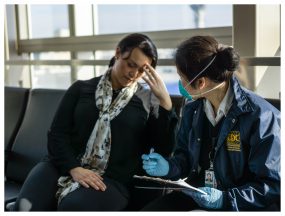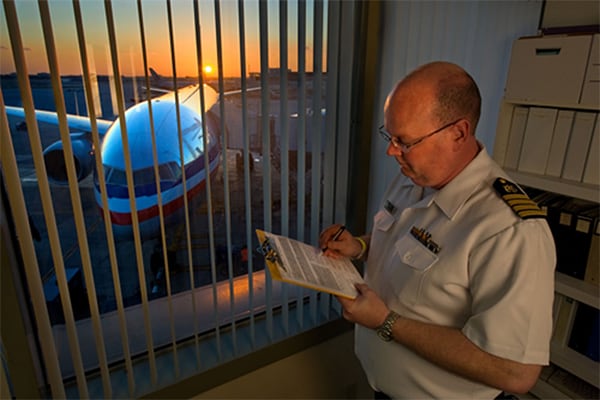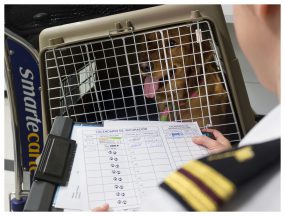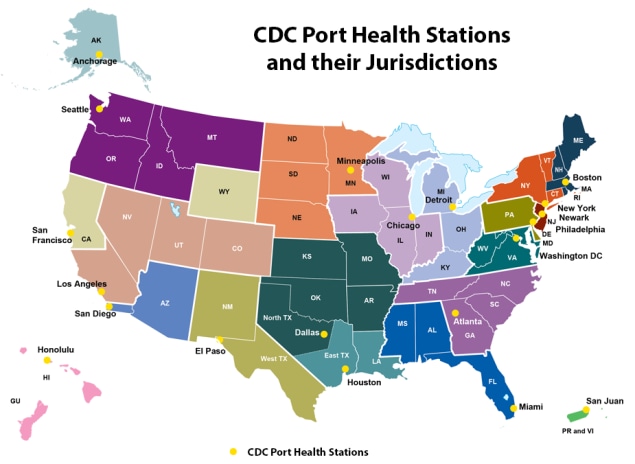Port Health
Who We Are
The Division of Global Migration Health (DGMH) works 24/7 to safeguard America from public health threats, both foreign and domestic. We are scientists, doctors, nurses, veterinarians, data experts, educators, communicators, and emergency responders. Our public health officers help protect more than 360 million travelers who arrive at US ports of entry by land, air, and sea—nearly 1 million per day.
What We Do

We protect America’s health at US ports of entry by detecting, responding to, and helping to prevent the spread of contagious diseases into the United States. Our responsibilities include:
- Evaluating sick travelers arriving at US ports of entry
- Alerting other passengers about potential exposures and steps they can take to protect themselves
- Restricting the importation of animals and products that may carry disease
Where We Work
CDC Port Health Stations are located where most international travelers arrive at 20 US ports of entry, and they cover all 300-plus US ports of entry.
How We Work Together

We collaborate with other federal agencies like Customs and Border Protection to restrict importation of products that could be harmful to US health.
We partner with local health officials to prevent anyone with certain infectious diseases from traveling and exposing others.
We work with airlines and cruise lines to identify sick travelers and alert other passengers of their potential exposure.
Program in Action
Disease is just a flight away. It’s our job to make sure one sick traveler doesn’t become 100 sick people in your community.

Regulating US entry of animals and restricting animal products:
- Dogs must be healthy and, with limited exceptions, be vaccinated against rabies.
- Nonhuman primates may only be imported for scientific, educational, or exhibition purposes—after detailed medical exams and quarantine for diseases like Ebola.
- Animal products harmful to human health are prevented from entering the United States.
Preparing for emergency responses:
- We collaborate with other agencies and organizations to partner on public health emergency exercises and responses.
Responding with life-saving drugs:
- We can send lifesaving drugs on the next flight to rush essential, emergency drugs for a patient with malaria, botulism, or diphtheria.
Photo credit to the following CDC staff (top to bottom): Kenta Ishii, Erin Rothney, Greg Knoblock, and Derek Sakris.
- Visit the Port Health and Importation sites.
- Video: CDC’s Quarantine Legacy
